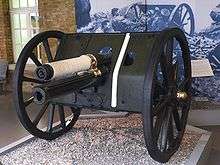Néry
| Néry | |
|---|---|
 Néry | |
|
Location within Hauts-de-France region  Néry | |
| Coordinates: 49°16′56″N 2°46′45″E / 49.2822°N 2.7792°ECoordinates: 49°16′56″N 2°46′45″E / 49.2822°N 2.7792°E | |
| Country | France |
| Region | Hauts-de-France |
| Department | Oise |
| Arrondissement | Senlis |
| Canton | Crépy-en-Valois |
| Intercommunality | Basse Automne |
| Government | |
| • Mayor (2001–2008) | Claude Picart |
| Area1 | 16.34 km2 (6.31 sq mi) |
| Population (1999)2 | 677 |
| • Density | 41/km2 (110/sq mi) |
| Time zone | CET (UTC+1) |
| • Summer (DST) | CEST (UTC+2) |
| INSEE/Postal code | 60447 / 60320 |
| Elevation |
37–154 m (121–505 ft) (avg. 101 m or 331 ft) |
|
1 French Land Register data, which excludes lakes, ponds, glaciers > 1 km² (0.386 sq mi or 247 acres) and river estuaries. 2 Population without double counting: residents of multiple communes (e.g., students and military personnel) only counted once. | |
Néry is a commune in the Oise department in northern France.
The commune includes the hamlets of Huleux, Vaucelles, and Verrines. The Church of Saint-Martin in Néry dates from 1140 with later additions. The Manoir de Huleux was built in 1550.[1] In 719 AD, Néry was the scene of a battle in which Charles Martel defeated the Neustrians. At the start of World War I in 1914, a delaying action was fought in the village by part of the British Expeditionary Force.
The Affair at Néry

At dawn on 1 September 1914, the British 1st Cavalry Brigade and L Battery of the Royal Horse Artillery who had bivouaced at Néry, were surprised by the advancing German 4th Cavalry Division. The German attack was supported by 12 guns which devastated the British battery. However a single 13 pounder gun was kept firing, and together with the rifles and machine-guns of the Queen's Bays,[2] held off the Germans long enough for elements of the 1st and 4th Cavalry Brigade to counterattack and drive away the attackers in disorder. The German division was withdrawn to the reserve corps; there were 135 British casualties.[3] Three Victoria Crosses were awarded to L Battery (Edward Kinder Bradbury, George Thomas Dorrell and David Nelson), and the "Néry Gun" is preserved in the Imperial War Museum.[4]
See also
References
- ↑ http://www.cc-ba.com/nery/decouverte.htm
- ↑ http://www.qdg.org.uk/pages/WW-One-Part-1-118.php
- ↑ Mons 1914: the BEF's Tactical Triumph by David Lomas and Ed Dovey, Osprey Publishing, 1997 pp. 83-85.
- ↑ http://www.lneryoca.org.uk/page_322793.html
| Wikimedia Commons has media related to Néry. |